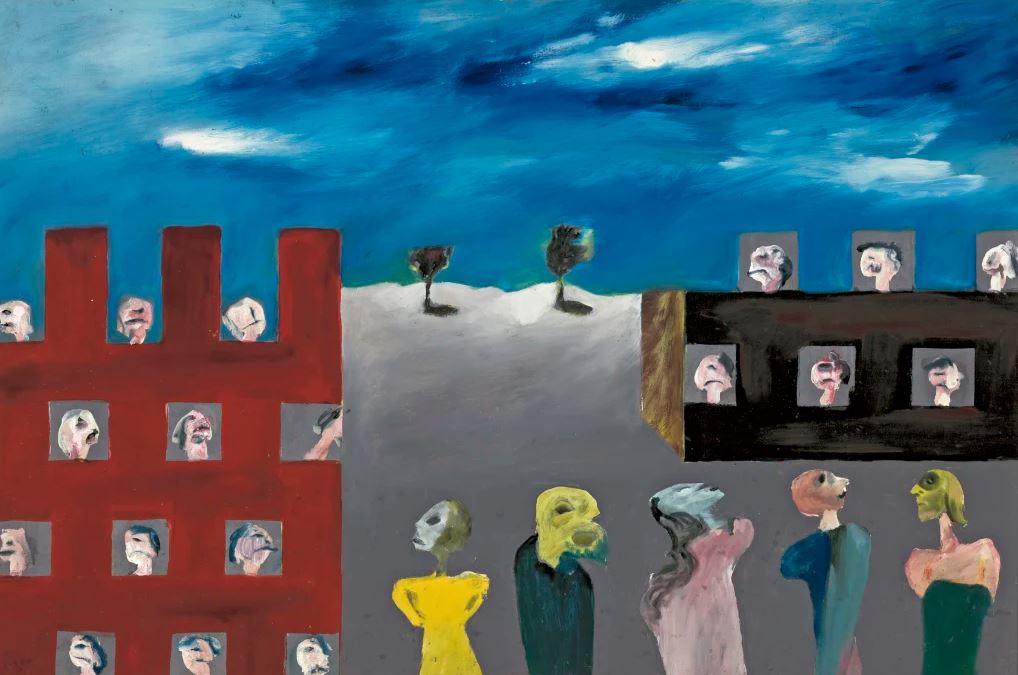Few artists have captured our history as forcefully as Sidney Nolan. His most iconic works – from a stylised Ned Kelly to the doomed explorers Burke and Wills – are synonymous with Australian modernism. And yet there are aspects of Nolan’s own history that remain virtually unknown. One of the most significant but little known chapters of his life began in January 1962, with a visit to Auschwitz in the company of Al Alvarez, friend and poetry editor of London’s Observer newspaper.
Nolan had been commissioned to illustrate an article Alvarez was writing on Nazi concentration camps but Auschwitz shook him to his core. He found himself unable to paint it and the encounter shaped his imagery throughout the years that followed.
As early as 1939, while still living in Melbourne, Nolan first painted the darkness of concentration camps. Prison Camp was brushed over a newspaper photograph of Buchenwald inmates wearing black and white striped uniforms. Nolan recorded his depth of feeling on the back, writing ‘‘Camp … Tears (St Kilda Beach)’’.
In 1944 he painted Lublin, an image of the Polish city that before World War II had been an important centre of Jewish culture. By the end of the war, the Jewish population had been almost entirely eradicated. The Nazis had established a ghetto within the city limits to house forcibly relocated Jewish and Polish families. Overcrowding, disease and a deliberate policy of starvation sapped their strength as they waited to be shot in the forest or packed shoulder to shoulder in the gas chambers of Majdanek, Sobibor or Belzec.
Read the article by Andrew Turley in The Sydney Morning Herald.

